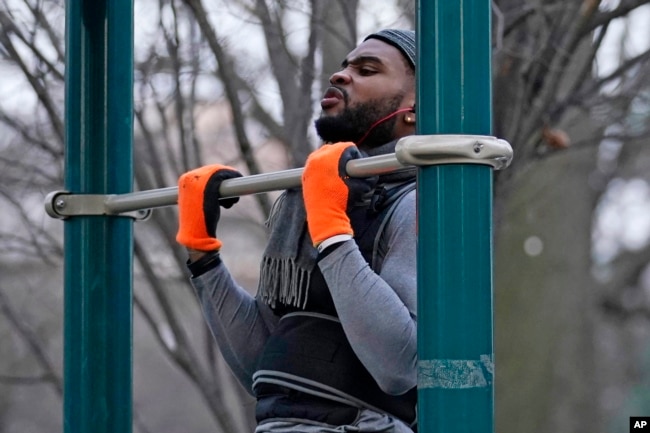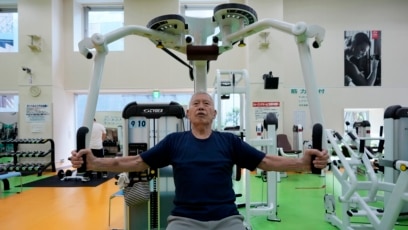“No pain, no gain” is an old saying in English. It means that one has to suffer or work hard in order to succeed or make progress.
The expression is now often used to push people to train harder or exercise more to get good effects.
But just how much pain do you have to have from weight training? The answer depends on what you are trying to gain, fitness experts say.
For years, some trainers have told people that to get the best results, they need to train “until failure.”
Training “until failure” means that you do an exercise until you cannot do one more repetition. Some recent studies, however, suggest training “until failure” with weights may only help some people.
“If somebody wants to increase muscle mass as much as they possibly can, then training to failure is something to consider,” said Michael Zourdos of Florida Atlantic University.
Zourdos co-wrote a review of 55 research papers on the subject in the scientific publication Sports Medicine.
Zourdos and colleagues found that lifting weights “until failure” may build bigger muscles. But training in such a way is not needed to increase strength. He said people who work out hard, but do not push themselves to exhaustion, will still likely make their health and fitness better. “There is a difference between training for health and training for elite performance benefits,” he said.

For the average person simply looking to increase their fitness levels, Zourdos said it is much easier to get results. He explained people who work out regularly would benefit from an intense session that comes within five to 10 repetitions of failure.
He also said “failure training” often comes at a cost. People who train until failure might be so tired and in so much pain that they skip their next workout or two.
In rare cases, extremely difficult training can even be harmful. One example is the condition called rhabdomyolysis, where damaged muscles begin to break down, possibly causing kidney damage.
James Fisher is a sport science expert and advisor in Southampton, England. He said many people are not interested in the idea of working until complete exhaustion.
“What we’re really talking about is how hard you should work when you go to the gym,” he said.
Fisher added that the idea should be understood to mean that people can spend less time in the gym — if they work hard.
“If you’re short on time, then you can push yourself harder, and then you don’t need to work out as long,” he said.
Fisher explained that to increase strength, it is necessary to push your muscles to a certain level.
“If you lift a weight you can easily lift ten times or more, you never really work hard enough,” he said. “Now, if we increase the weight so that on the ninth and 10th rep, it feels … hard, that will benefit your muscle…”
Still, Fisher said that the best workout is “one that people will actually do,” regardless of how hard they push themselves. He said that strength training is probably the best single thing people can do for their health, quality of life and longevity.
Whatever your fitness goal, Fisher said the idea of failure training can be included into your workout. People should then rest the muscle group they have trained for about two days, he said.
For people who have more experience, experts suggest saving the failure training for some of the workouts, or on the last set of exercises in your session.
“It’s not meant to be for every person, every time they work out,” Fisher said. “This is a tough way to exercise.”
I’m John Russell.
Maria Cheng reported on this story for the Associated Press. John Russell adapted it for VOA Learning English.
Quiz – How Hard Should You Train?

Start the Quiz to find out
________________________________________________
Words in This Story
repetition – n. a motion or exercise (such as a push-up, squat, or pullup) that is repeated and usually counted
colleague – n. a fellow worker or professional
exhaustion – n. the act or process of using up all of your energy; the act or process of using all of a muscle’s ability
elite — adj. superior in quality, skill, etc.
benefit – n. a good or helpful result or effect
gym — n. a space containing equipment for weight training, cardiovascular training, etc.
longevity — n. length of life
